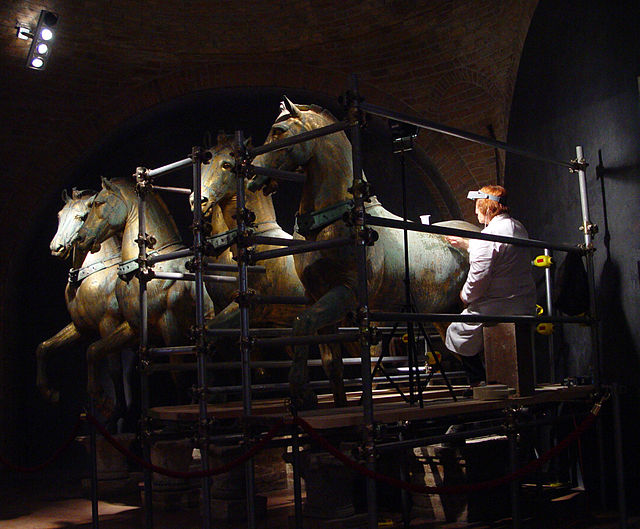A conservator-restorer is a professional responsible for the preservation of artistic and cultural artifacts, also known as cultural heritage. Conservators possess the expertise to preserve cultural heritage in a way that retains the integrity of the object, building or site, including its historical significance, context and aesthetic or visual aspects. This kind of preservation is done by analyzing and assessing the condition of cultural property, understanding processes and evidence of deterioration, planning collections care or site management strategies that prevent damage, carrying out conservation treatments, and conducting research. A conservator's job is to ensure that the objects in a museum's collection are kept in the best possible condition, as well as to serve the museum's mission to bring art before the public.
Paintings restoration
Use of a microscope to examine the condition of an artwork
Ceramics conservation
Conservation and restoration of cultural property
The conservation and restoration of cultural property focuses on protection and care of cultural property, including artworks, architecture, archaeology, and museum collections. Conservation activities include preventive conservation, examination, documentation, research, treatment, and education. This field is closely allied with conservation science, curators and registrars.
Removal of adherent surface deposits by physical chemical means (by cotton swab) at Church of Sucevița Monastery, burial chamber, in Suceava, Romania
Conservation of the Horses of Saint Mark (Venice)
Revision and conservation of the Holy Trinity Column in Olomouc (Czech Republic) in 2006
A temporary windowed partition along restoration work area in the cloister of the Church of St. Trophime, Arles







